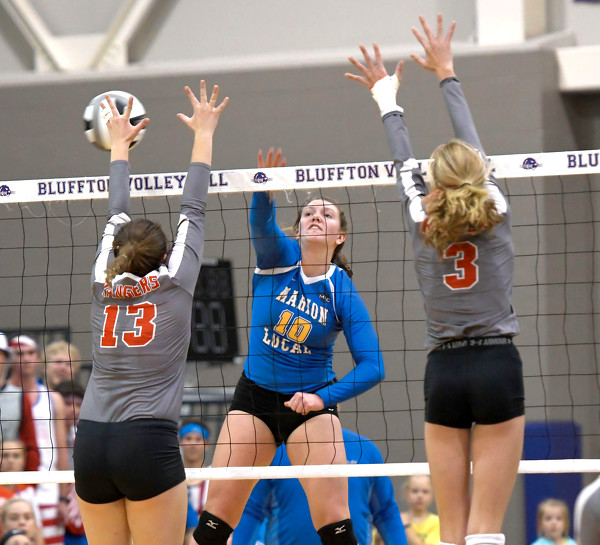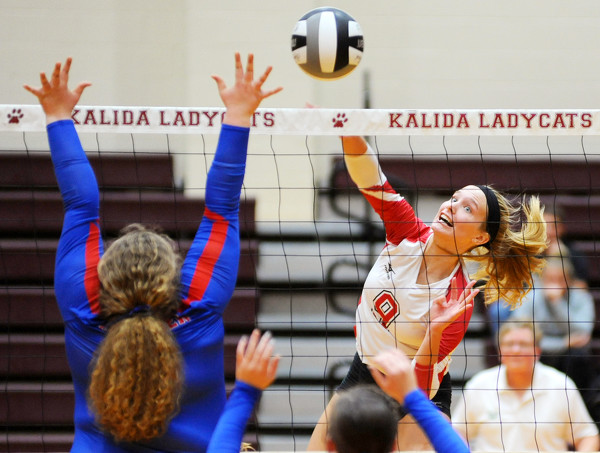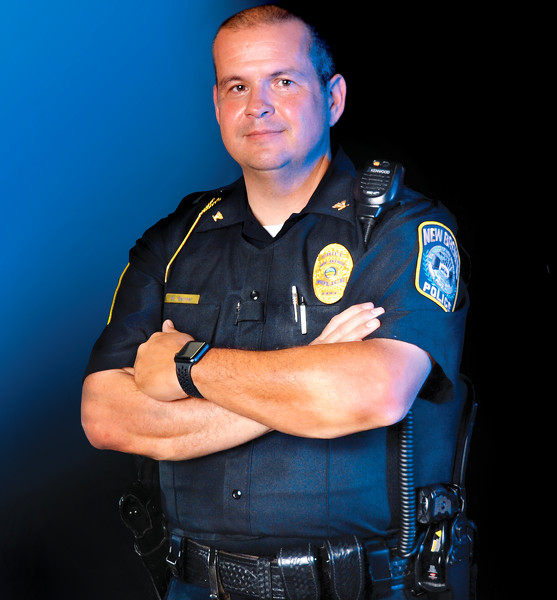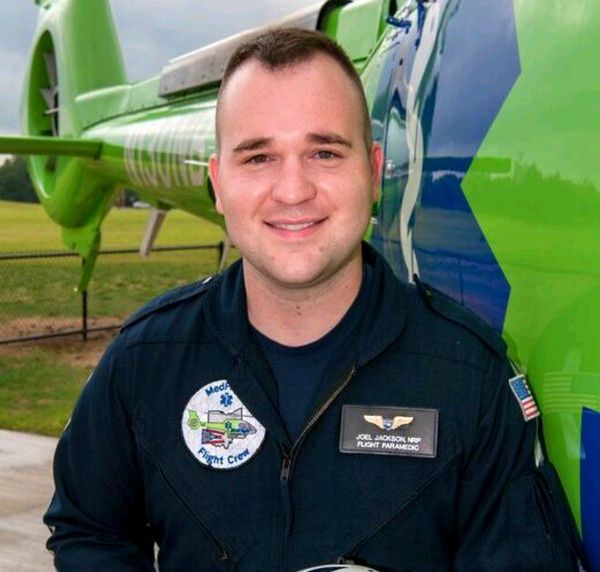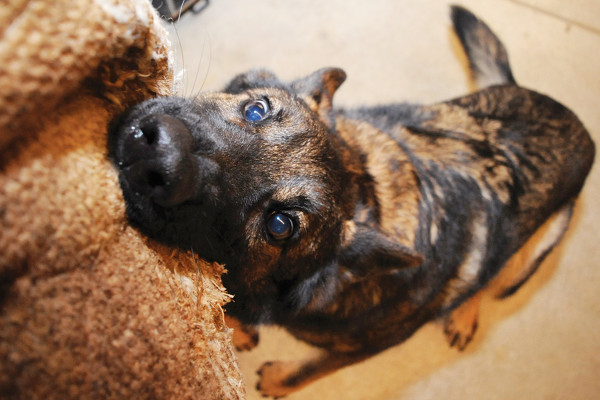Tuesday, October 22nd, 2019
Bionic Rita
Teen embraces her difference
By Leslie Gartrell
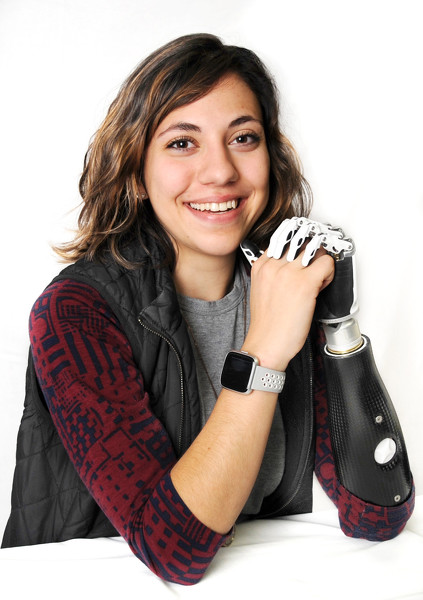
Photo by Dan Melograna/The Daily Standard
Rita Homan, who was born with a limb difference in her left arm, received a bionic arm prosthetic in August.
FORT RECOVERY - Rita Homan has always been more than willing to lend a helping hand.
Nowadays if you ask her if she can lend a hand, she'll likely give a sly smile and a quick word of affirmation before brandishing her new bionic hand, quickly whipping it off and extending it to the person in need.
It's a gag that Homan loves to pull since she received her futuristic, prosthetic arm in August.
Homan was born with a limb difference, more specifically with Poland syndrome. The disease can result in chest and limb deformities, which for Homan meant a smaller left arm with a small, non-functioning hand attached.
Alison Homan, Rita's mother, said in an email that her daughter had shown an interest in prosthetics since she was adopted from Armenia at the age of 7. She took her daughter to an orthopedic specialist at Shriners Hospitals for Children Medical Center in Lexington, Kentucky, after her adoption. However, not much could be done to accommodate her limb difference.
"At that time in 2008 the technology wasn't there to fit her with a functioning prosthetic," Alison Homan said.
However, things changed when Rita Homan became friends with a girl at the Amputee Coalition Paddy Rossbach Youth Camp, or as the teen calls it, "Amp Camp," in 2018.
After attending camp for four years, Homan befriended another girl with a limb difference who had an above-the-elbow amputation and had a prosthetic.
She immediately pushed her parents to look into a prosthetic again, although her mother wasn't sure anything could be done.
After consulting with orthopedic surgeons, the Homans were referred to Dr. Ian Valerio, the division director of the Burn, Wound and Trauma in the Department of Plastic and Reconstructive Surgery and plastic surgeon at The Ohio State University Wexner Medical Center.
One of Valerio's many specialities is targeted muscle reinnervation. TMR can reroute damaged nerves or nerves cut during amputation into motor nerves in nearby muscle, re-establishing neural circuitry and giving the nerves somewhere to go and something to do, according to the Wexner Medical Center.
TMR originally was developed to allow those with upper-limb amputations to have better control of their limb prosthetics, the medical center continued. When nerves are rerouted to specific nerves in specific muscles, it allows for more individual muscle function, providing for more refined movements and a wider range of motion with an advanced prosthetic.
"Long story short, Dr. Valerio amputated her little hand and took the nerves from her hand and placed them throughout her little arm all to prepare her for a bioprosthetic arm," Alison Homan said.
After the amputation on March 12, Rita Homan spent some time to heal her nerves before starting the fitting process in June. By mid-August, she'd been fitted with a "totally futuristic" arm, her mom said.
The 18-year-old Fort Recovery High School senior said the new prosthetic, which features a carbon fiber arm, a hybrid elbow and a myoelectric BeBionic hand, makes her feel like "the bionic woman."
"I was so determined to get something like this," Rita Homan said. "It was very life changing."
The myoelectric-controlled arm prostheses is an externally powered prostheses, meaning it is powered not by the muscle strength of the user, but with the aid of electric power.
According to Ottobock, the maker of Homan's BeBionic hand, a biochemical process generates electrical tension in the microvolt range every time a muscle contracts. This tension can be measured on the skin, which also applies to the muscles remaining after an amputation.
The low myoelectrical impulses that lie in the microvolt range are amplified and forwarded to the electronics of the prosthesis in the form of control signals.
"In her mind she is 'acting' like she is doing a certain movement with her right hand but actually doing it with her stub on her left side," her mother said. "These commands are picked up by sensors inside her arm and she will do that movement with her BeBionic hand. .... It is truly amazing."
Rita isn't the only Homan with a limb difference. Paul, 14, was born with what the family assumes is amniotic band syndrome, while Jesse, 8, and Eddie, 4, were born with bilateral radial aplasia. The family of seven kids, four of whom who were adopted from China, including Paul, Jesse and Eddie, can get a little crazy, the high school senior said. However, they all share the same appreciation and love for their adoptive parents.
Homan's prosthetic arm has given her a newfound confidence. She's even taken to modeling, with her futuristic arm front-and-center, for a friend who's a photographer.
"I like being that bionic girl," she said with a smile.
The new arm is a whole different feeling, she added. It's resourceful, helping her open doors and hold things she wasn't able to before.
While the prosthetic can be a bit of a pain - it's not waterproof, takes a while to adjust and has a strap that can be a bit uncomfortable - she said she's extremely thankful for her family and team of health care professionals who helped make it happen.
"I can't really get it into words on how awesome and how lucky I am to be able to have parents who can provide me with something so awesome," she said.
As she adjusts to her new limb, Homan continues effortlessly to juggle school, two jobs and her cake business, Rita's Desserts (which she hopes to rebrand as The Bionic Baker). However, her humility remains the same.
"It's unexplainable," she said. "I feel very blessed and complete with this."

